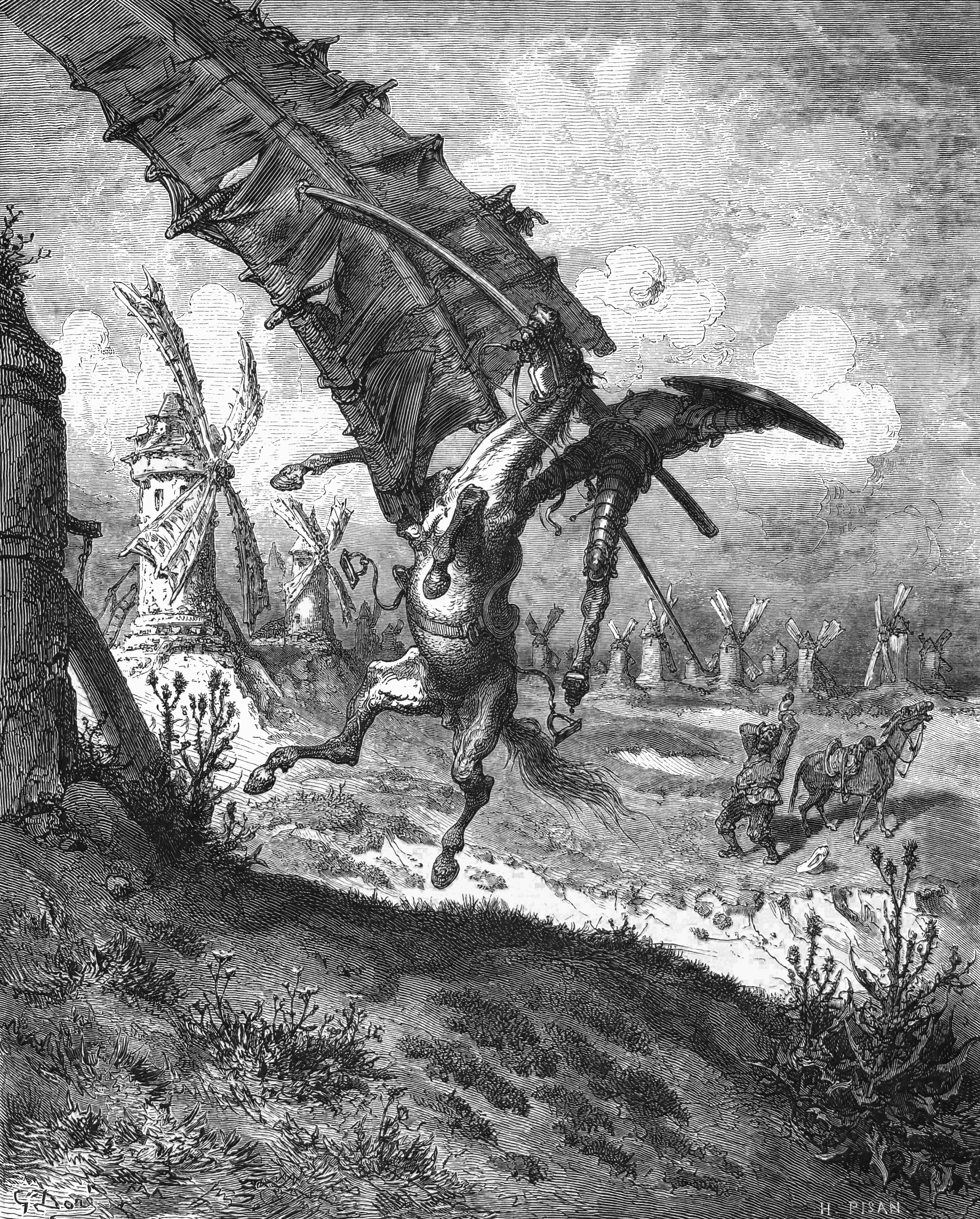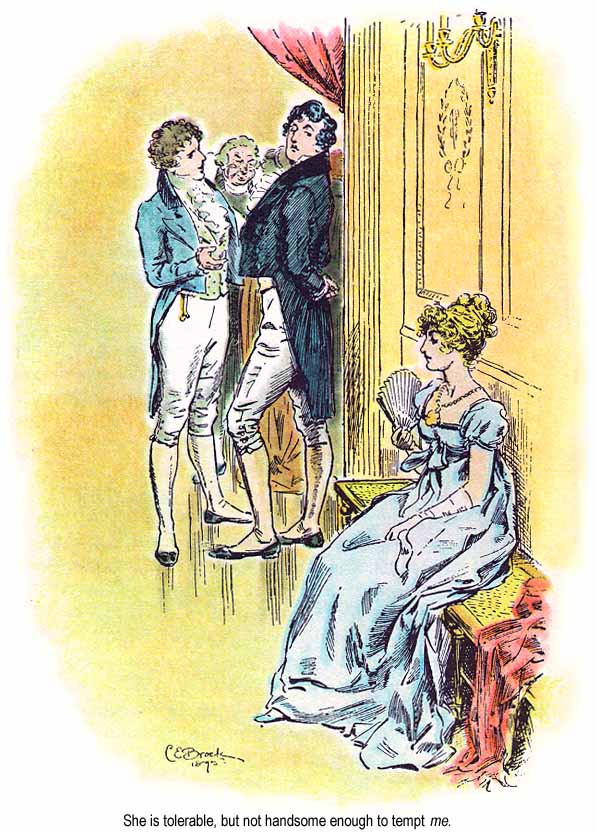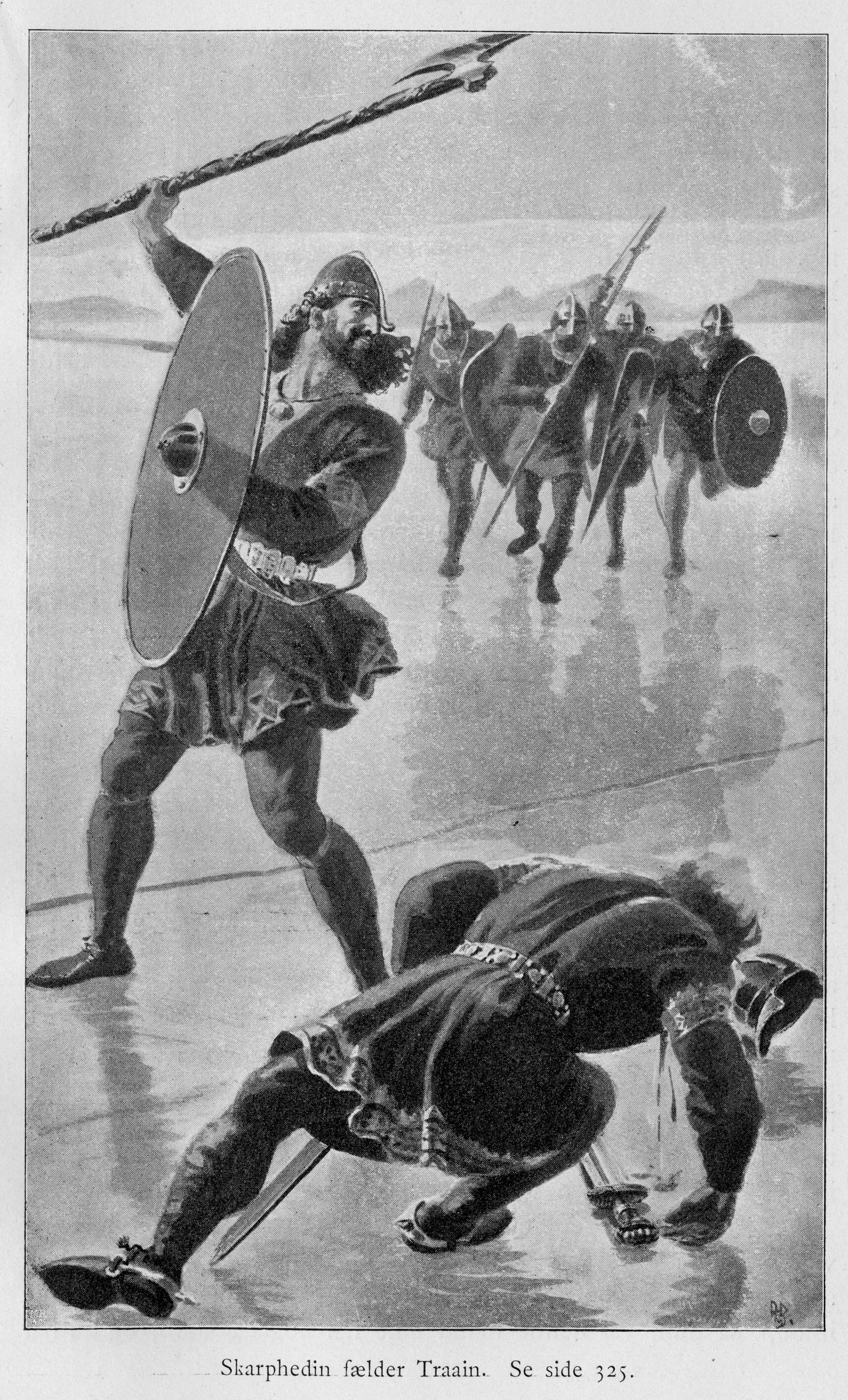|
Bokklubben World Library
Bokklubben World Library ( no, Verdensbiblioteket) is a series of classical books, mostly novels, published by the since 2002. It is based on a list of the hundred best books, as proposed by one hundred writers from fifty-four countries, compiled and organized in 2002 by the Book Club. This list endeavors to reflect world literature, with books from all countries, cultures, and time periods. Each writer had to select his or her own list of ten books. The books selected by this process and listed here are not ranked or categorized in any way; the organizers have stated that "they are all on an equal footing," with the exception of ''Don Quixote'' which was given the distinction "best literary work ever written." Fyodor Dostoevsky is the author with the most books on the list, with four. William Shakespeare, Franz Kafka, and Leo Tolstoy each have three. Breakdown of voters and list The writers surveyed included 69 men and 31 women. 85 of the books included on the list are written ... [...More Info...] [...Related Items...] OR: [Wikipedia] [Google] [Baidu] |
Don Quixote
is a Spanish epic novel by Miguel de Cervantes. Originally published in two parts, in 1605 and 1615, its full title is ''The Ingenious Gentleman Don Quixote of La Mancha'' or, in Spanish, (changing in Part 2 to ). A founding work of Western literature, it is often labelled as the first modern novel and one of the greatest works ever written. ''Don Quixote'' is also one of the most-translated books in the world. The plot revolves around the adventures of a member of the lowest nobility, an hidalgo from La Mancha named Alonso Quijano, who reads so many chivalric romances that he either loses or pretends to have lost his mind in order to become a knight-errant () to revive chivalry and serve his nation, under the name . He recruits a simple farmer, Sancho Panza, as his squire, who often employs a unique, earthy wit in dealing with Don Quixote's rhetorical monologues on knighthood, already considered old-fashioned at the time, and representing the most droll realism in contr ... [...More Info...] [...Related Items...] OR: [Wikipedia] [Google] [Baidu] |
One Thousand And One Nights
''One Thousand and One Nights'' ( ar, أَلْفُ لَيْلَةٍ وَلَيْلَةٌ, italic=yes, ) is a collection of Middle Eastern folk tales compiled in Arabic during the Islamic Golden Age. It is often known in English as the ''Arabian Nights'', from the first English-language edition (), which rendered the title as ''The Arabian Nights' Entertainment''. The work was collected over many centuries by various authors, translators, and scholars across West, Central and South Asia, and North Africa. Some tales trace their roots back to ancient and medieval Arabic literature, Arabic, Egyptian literature, Egyptian, Sanskrit literature, Sanskrit, Persian literature, Persian, and Mesopotamian myths, Mesopotamian literature. Many tales were originally folk stories from the Abbasid Caliphate, Abbasid and Mamluk Sultanate (Cairo), Mamluk eras, while others, especially the frame story, are most probably drawn from the Middle Persian literature#"Pahlavi" literature, Pahlavi Persian ... [...More Info...] [...Related Items...] OR: [Wikipedia] [Google] [Baidu] |
Père Goriot
''Le Père Goriot'' (, ''"Old Goriot"'' or ''"Father Goriot"'') is an 1835 novel by French novelist and playwright Honoré de Balzac (1799–1850), included in the ''Scènes de la vie privée'' section of his novel sequence ''La Comédie humaine''. Set in Paris in 1819, it follows the intertwined lives of three characters: the elderly doting Goriot, a mysterious criminal-in-hiding named Vautrin and a naive law student named Eugène de Rastignac. Originally published in serial form during the winter of 1834–35, ''Le Père Goriot'' is widely considered Balzac's most important novel.Hunt, p. 95; Brooks (1998), p. ix; Kanes, p. 9. It marks the first serious use by the author of characters who had appeared in other books, a technique that distinguishes Balzac's fiction. The novel is also noted as an example of his realist style, using minute details to create character and subtext. The novel takes place during the Bourbon Restoration, which brought profound changes to French ... [...More Info...] [...Related Items...] OR: [Wikipedia] [Google] [Baidu] |
Pride And Prejudice
''Pride and Prejudice'' is an 1813 novel of manners by Jane Austen. The novel follows the character development of Elizabeth Bennet, the dynamic protagonist of the book who learns about the repercussions of hasty judgments and comes to appreciate the difference between superficial goodness and actual goodness. Mr. Bennet, owner of the Longbourn estate in Hertfordshire, has five daughters, but his property is Fee tail, entailed and can only be passed to a male heir. His wife also lacks an inheritance, so his family faces becoming poor upon his death. Thus, it is imperative that at least one of the daughters marries well to support the others, which is a motivation that drives the plot. ''Pride and Prejudice'' has consistently appeared near the top of lists of "most-loved books" among literary scholars and the reading public. It has become one of the most popular novels in English literature, with over 20 million copies sold, and has inspired many derivatives in modern literatur ... [...More Info...] [...Related Items...] OR: [Wikipedia] [Google] [Baidu] |
Old Norse
Old Norse, Old Nordic, or Old Scandinavian, is a stage of development of North Germanic languages, North Germanic dialects before their final divergence into separate Nordic languages. Old Norse was spoken by inhabitants of Scandinavia and their Viking expansion, overseas settlements and chronologically coincides with the Viking Age, the Christianization of Scandinavia and the consolidation of Scandinavian kingdoms from about the 7th to the 15th centuries. The Proto-Norse language developed into Old Norse by the 8th century, and Old Norse began to develop into the modern North Germanic languages in the mid-to-late 14th century, ending the language phase known as Old Norse. These dates, however, are not absolute, since written Old Norse is found well into the 15th century. Old Norse was divided into three dialects: Old West Norse, ''Old West Norse'' or ''Old West Nordic'' (often referred to as ''Old Norse''), Old East Norse, ''Old East Norse'' or ''Old East Nordic'', and ''Ol ... [...More Info...] [...Related Items...] OR: [Wikipedia] [Google] [Baidu] |
Icelandic Commonwealth
The Icelandic Commonwealth, also known as the Icelandic Free State, was the political unit existing in Iceland between the establishment of the Althing in 930 and the pledge of fealty to the Norwegian king with the Old Covenant in 1262. With the probable exception of hermitic Irish monks known as Papar, Iceland was an uninhabited island until around 874. The Icelandic Commonwealth had a unique political system whereby chieftains (''goðar'') established a common legal code and settled judicial disputes at the Althing, a national assembly. However, there was no executive body in Iceland that enforced the legal code. The Icelandic Commonwealth has consequently been characterized as a stateless society. During the 13th century, Iceland came under the control of the Norwegian Kingdom. Goðorð system The medieval Icelandic state had a unique judicial structure. The first settlers of Iceland were greatly influenced by their Norwegian roots when creating their own form of governmen ... [...More Info...] [...Related Items...] OR: [Wikipedia] [Google] [Baidu] |
Sæmundr Fróði
Sæmundr Sigfússon, better known as Sæmundr fróði (''Sæmundr the Learned''; 1056–1133), was an Icelandic priest and scholar. Biography Sæmundr is known to have studied abroad. Previously it has generally been held that he studied in France, but modern scholars rather believe his studies were carried out in Franconia. In Iceland he founded a long-lived school at Oddi. He was a member of the Oddaverjar clan and was the father of Loftur Sæmundsson. Sæmundr wrote a work, probably in Latin, on the history of Norwegian kings. The work is now lost but was used as a source by later authors, including Snorri Sturluson. The poem ''Nóregs konungatal'' summarizes Sæmundr's work. The authorship of the Poetic Edda, or, more plausibly, just the editor's role in the compilation, was traditionally attributed to Sæmundr - Bishop Brynjulf asked in 1641 "Where now are those huge treasuries of all human knowledge written by Saemund the Wise, and above all that most noble Edda"? - bu ... [...More Info...] [...Related Items...] OR: [Wikipedia] [Google] [Baidu] |
Njáls Saga
''Njáls saga'' ( ), also ''Njála'' ( ), ''Brennu-Njáls saga'' ( ) or ''"The Story of Burnt Njáll"'', is a thirteenth-century sagas of Icelanders, Icelandic saga that describes events between 960 and 1020. The saga deals with a process of blood feuds in the Icelandic Commonwealth, showing how the requirements of honor could lead to minor slights spiralling into destructive and prolonged bloodshed. Insults where a character's manhood is called into question are especially prominent and may reflect an author critical of an overly restrictive ideal of masculinity. Another characteristic of the narrative is the presence of omens and prophetic dreams. It is disputed whether this reflects a fatalism, fatalistic outlook on the part of the author. The principal characters in the saga are the friends Njáll Þorgeirsson, a lawyer and a sage, and Gunnar Hámundarson, a formidable warrior. Gunnar's wife, Hallgerðr langbrók, instigates a feud that leads to the death of many character ... [...More Info...] [...Related Items...] OR: [Wikipedia] [Google] [Baidu] |
Arabic Language
Arabic (, ' ; , ' or ) is a Semitic language spoken primarily across the Arab world.Semitic languages: an international handbook / edited by Stefan Weninger; in collaboration with Geoffrey Khan, Michael P. Streck, Janet C. E.Watson; Walter de Gruyter GmbH & Co. KG, Berlin/Boston, 2011. Having emerged in the 1st century, it is named after the Arab people; the term "Arab" was initially used to describe those living in the Arabian Peninsula, as perceived by geographers from ancient Greece. Since the 7th century, Arabic has been characterized by diglossia, with an opposition between a standard prestige language—i.e., Literary Arabic: Modern Standard Arabic (MSA) or Classical Arabic—and diverse vernacular varieties, which serve as mother tongues. Colloquial dialects vary significantly from MSA, impeding mutual intelligibility. MSA is only acquired through formal education and is not spoken natively. It is the language of literature, official documents, and formal written m ... [...More Info...] [...Related Items...] OR: [Wikipedia] [Google] [Baidu] |
Tajikistan
Tajikistan (, ; tg, Тоҷикистон, Tojikiston; russian: Таджикистан, Tadzhikistan), officially the Republic of Tajikistan ( tg, Ҷумҳурии Тоҷикистон, Jumhurii Tojikiston), is a landlocked country in Central Asia. It has an area of and an estimated population of 9,749,625 people. Its capital and largest city is Dushanbe. It is bordered by Afghanistan to the south, Uzbekistan to the west, Kyrgyzstan to the north, and China to the east. It is separated narrowly from Pakistan by Afghanistan's Wakhan Corridor. The traditional homelands of the Tajiks include present-day Tajikistan as well as parts of Afghanistan and Uzbekistan. The territory that now constitutes Tajikistan was previously home to several ancient cultures, including the city of Sarazm of the Neolithic and the Bronze Age and was later home to kingdoms ruled by people of different faiths and cultures, including the Oxus civilization, Andronovo culture, Buddhism, Nestorian Ch ... [...More Info...] [...Related Items...] OR: [Wikipedia] [Google] [Baidu] |
Egypt
Egypt ( ar, مصر , ), officially the Arab Republic of Egypt, is a transcontinental country spanning the northeast corner of Africa and southwest corner of Asia via a land bridge formed by the Sinai Peninsula. It is bordered by the Mediterranean Sea to the north, the Gaza Strip of Palestine and Israel to the northeast, the Red Sea to the east, Sudan to the south, and Libya to the west. The Gulf of Aqaba in the northeast separates Egypt from Jordan and Saudi Arabia. Cairo is the capital and largest city of Egypt, while Alexandria, the second-largest city, is an important industrial and tourist hub at the Mediterranean coast. At approximately 100 million inhabitants, Egypt is the 14th-most populated country in the world. Egypt has one of the longest histories of any country, tracing its heritage along the Nile Delta back to the 6th–4th millennia BCE. Considered a cradle of civilisation, Ancient Egypt saw some of the earliest developments of writing, agriculture, ur ... [...More Info...] [...Related Items...] OR: [Wikipedia] [Google] [Baidu] |
Syria
Syria ( ar, سُورِيَا or سُورِيَة, translit=Sūriyā), officially the Syrian Arab Republic ( ar, الجمهورية العربية السورية, al-Jumhūrīyah al-ʻArabīyah as-Sūrīyah), is a Western Asian country located in the Eastern Mediterranean and the Levant. It is a unitary republic that consists of 14 governorates (subdivisions), and is bordered by the Mediterranean Sea to the west, Turkey to the north, Iraq to the east and southeast, Jordan to the south, and Israel and Lebanon to the southwest. Cyprus lies to the west across the Mediterranean Sea. A country of fertile plains, high mountains, and deserts, Syria is home to diverse ethnic and religious groups, including the majority Syrian Arabs, Kurds, Turkmens, Assyrians, Armenians, Circassians, Albanians, and Greeks. Religious groups include Muslims, Christians, Alawites, Druze, and Yazidis. The capital and largest city of Syria is Damascus. Arabs are the largest ethnic group, and Mu ... [...More Info...] [...Related Items...] OR: [Wikipedia] [Google] [Baidu] |

.jpg)




